It’s an eternal question. There’s a lot of talk about “how to motivate students” these days, and for good reason. Motivated students are more engaged to learn.
According to Gallup, “Engaged students are 2.5 times more likely to say that they get excellent grades and do well in school, and they are 4.5 times more likely to be hopeful about the future than their actively disengaged peers.”
Where the message too often gets muddied by pundits and marketers is in using “motivate” as a verb – implying that a teacher (or anyone else) can instill motivation in another person. As every teacher and every coach knows, this simply isn’t the case. We can’t teach motivation. But we can help inspire and support it.
“Motivation relates to the drive to do something,” says Donna Walker Tileston in her book What Every Teacher Should Know About Student Motivation. “Motivation causes us to get up in the morning and go to work. Motivation drives us to study new things, and motivation encourages us to try again when we fail.”
In many ways, motivation is the holy grail of education. When we talk about “motivating” students, what we’re really talking about is creating an environment that helps students become and remain engaged, whether it’s through extrinsic motivation (external reward/punishment) or supporting intrinsic motivation (something the student does because they find it personally rewarding). Often the best way to support engagement involves a bit of both.
It all starts with the classroom culture. Regardless of the subject, teachers can support an encouraging, supportive classroom culture where positive habits and skills are valued – whether it’s for working hard, being kind, helping others or more specific subject-related skills.
Appreciation and rewards have been shown to have noticeable positive psychological effects. While external rewards can trigger motivation, receiving recognition can build confidence and lay the groundwork for more internal motivation to engage in the learning process.
According to Kendra Cherry in the verywellmind blog, external rewards can be particularly useful in sparking interest in something where there’s not already a degree of intrinsic motivation.
“Extrinsic rewards can be used to motivate people to acquire new skills or knowledge,” she says. “Once these early skills have been learned, people may then become more intrinsically motivated to pursue the activity. External rewards can also be a source of feedback, allowing people to know when their performance has achieved a standard deserving of reinforcement.”
Rewards can offer great benefits in the classroom. But some educators have expressed caution about over-use of rewards as incentives, with the potential for creating an environment where students only do the work for the reward. When rewards are entirely focused on the external (e.g. penalties or cashing-in points for material rewards) these potential issues are more likely to arise.
Like most things, use of rewards – and the type of rewards you offer – are largely a matter of exercising good judgment and moderation. Teachers who are in tune with their students can quickly see how each student is responding to rewards and change course.
Using digital badges to spark engagement
Digital badges are a great way for teachers to recognize their students’ accomplishments. These can be given for mastery of specific skills and they can also be given for effort – a way to recognize and reward struggling students who might normally receive little praise in the classroom. When a student is acknowledged for working hard, it becomes easier for them to see the value in the work they’re doing.
Badges can also be particularly effective in rewarding and supporting positive behavior and soft skills like collaboration, empathy and critical thinking. While these skills are often considered non-academic, they are essential social and emotional skills that help students facilitate positive interactions with others, overcome challenges and develop capabilities that will help them succeed in life.
Skooler Kudos gives teachers a highly flexible, easy-to-use set of tools for creating and assigning badges for skills and behaviors. Here’s a quick overview:
You’ll find Skooker Kudos on the Skooler dashboard in the menu bar.
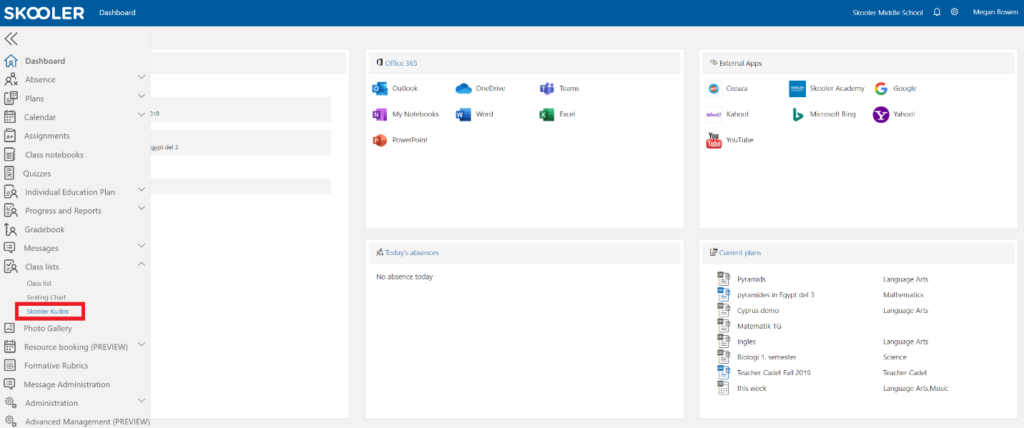
You’ll find a number of predesigned Kudos and point values you can use. Simply click on one (or more) students’ names to give Kudos.
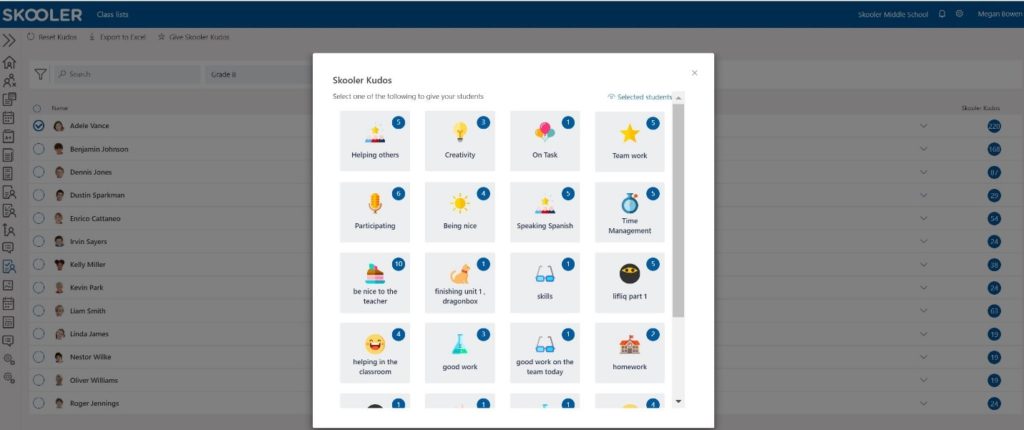
While Skooler provides a great selection of Kudos to choose from, you can also create you own collection of Kudos and tailor them to meet your students’ needs and the types of reward systems that work best for your students.
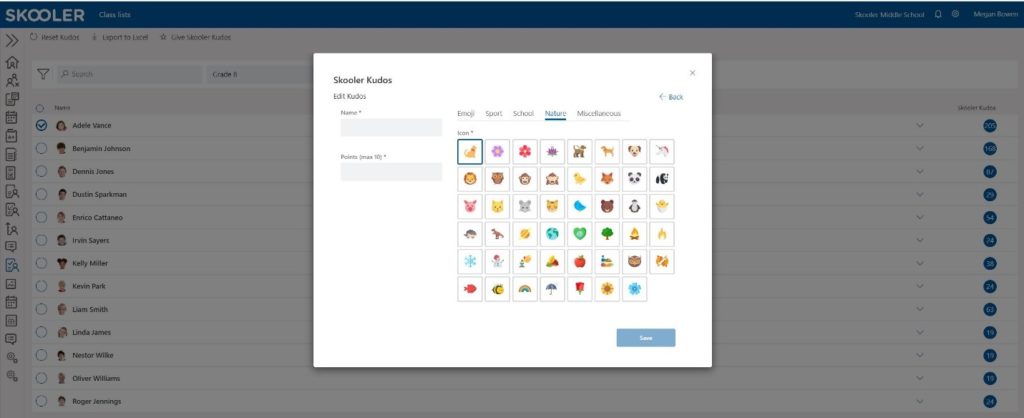
By clicking on the student, teachers can quickly see an overview of total kudos for each student by looking on their info card.
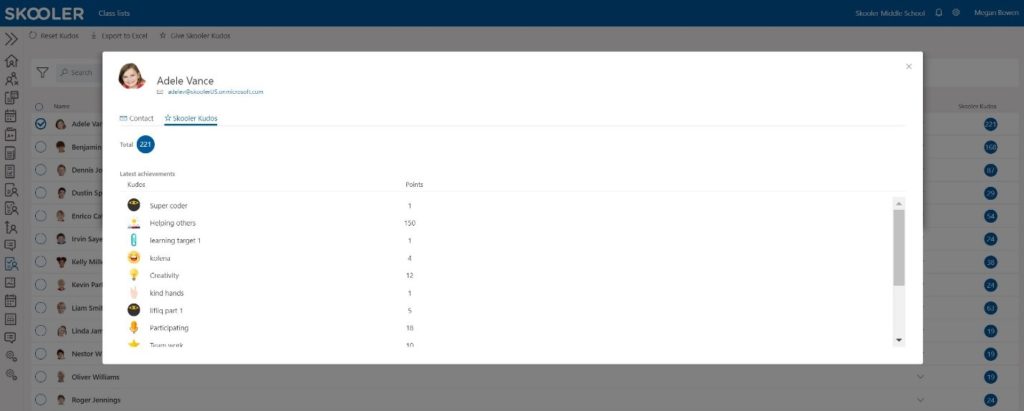
From the Student Portal, students can view their Kudos scores to easily keep track of their scores and performance.
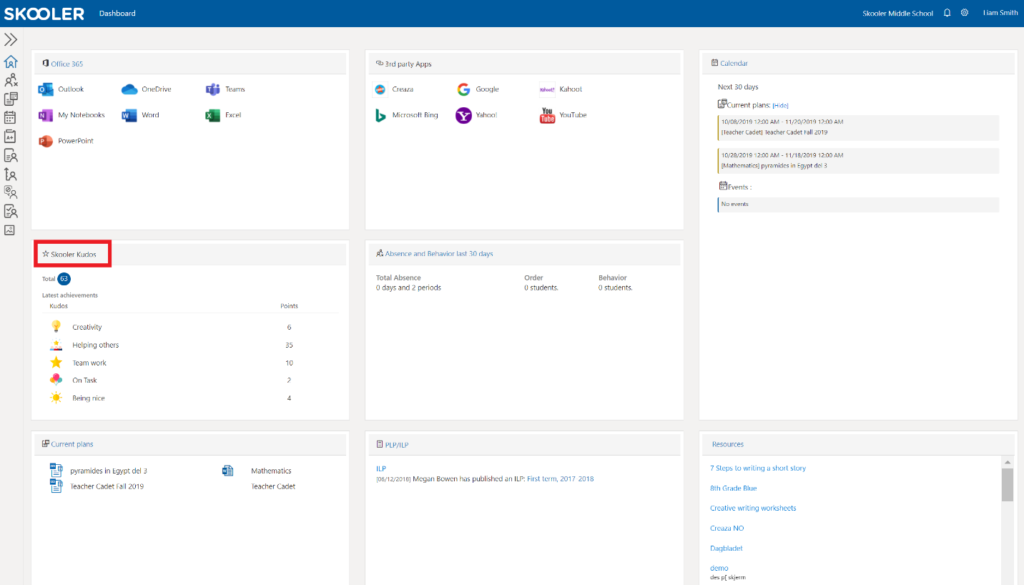
Skooler Kudos is also a great way to help parents stay engaged in how their students are doing in class. From the Parent Portal, parents can see an overview of their child’s kudos. And Kudos is also available in the Skooler Parent App, making #parent engagement just one click away.
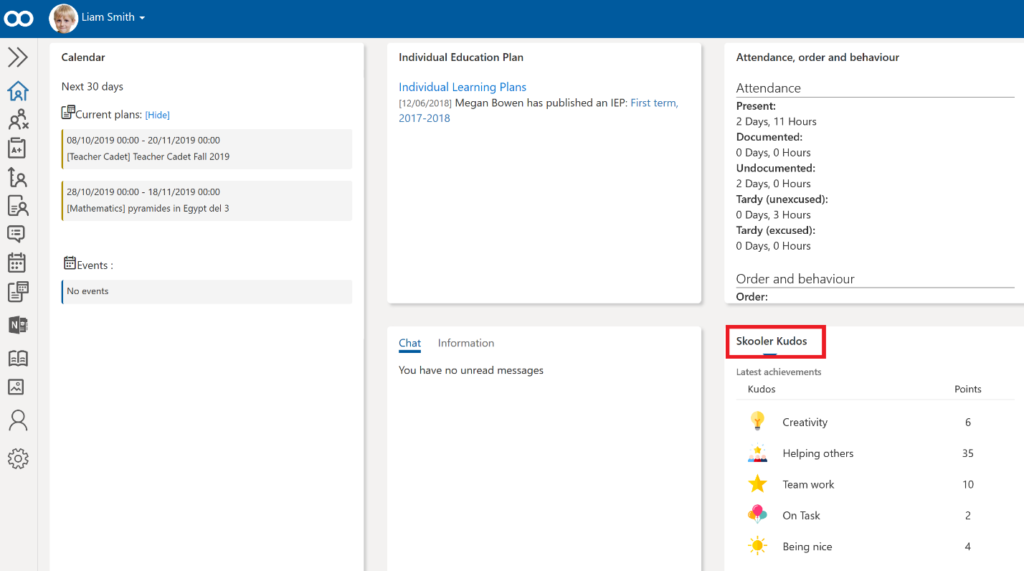
Skooler Kudos help make learning fun, and fun builds motivation
Skooler Kudos only encourages positive behavior – we don’t give penalties – and we do not tie Kudos to material rewards. Skooler keeps the focus on creating a positive learning environment in the classroom because when learning is fun, students become more engaged and motivated to learn. And bringing that element into the learning environment through Kudos can also help students retain what they learn.
“When learners feel positive about their learning process and know that they are going to be rewarded in some way for their efforts, then they stop becoming passive observers and turn into active participants,” says Christopher Pappas in his article The Science and the Benefits of Gamification in eLearning. “By doing so, they are able to effectively absorb the information and commit it to the long-term memory, because the knowledge itself is linked to the favorable experience you’ve provided through gamification in eLearning.”
Skooler Kudos can be a teacher’s playground for creative rewards
With the ease and flexibility of Skooler Kudos, we look forward to seeing how inventive teachers will be in creating rewards and positive incentives that help their students get engaged and stay motivated to learn. And we’d also love to hear how you use Kudos to encourage and develop soft skills like critical thinking, collaboration and empathy.
Please share your ideas and successes with us!
